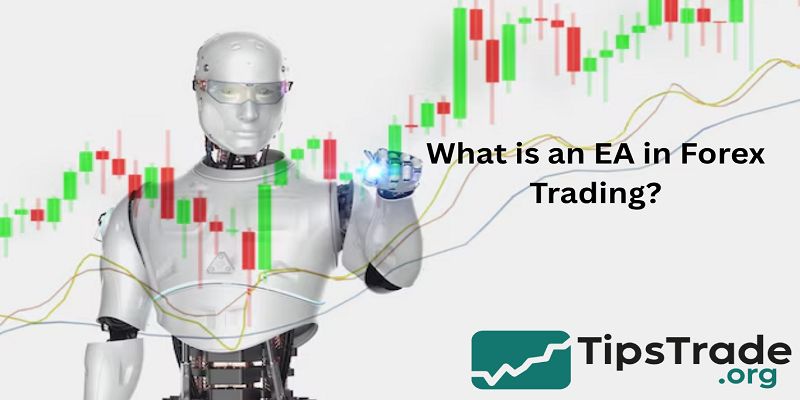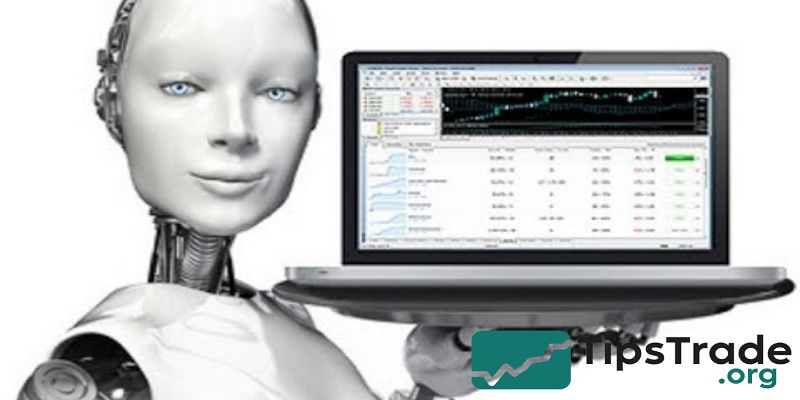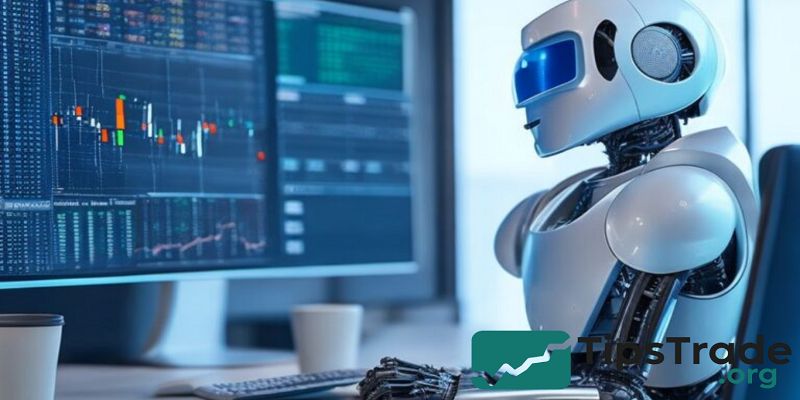EA Forex, or Expert Advisor Forex, is automated software designed to execute trading strategies on behalf of traders within the forex market. EA Forex eliminates emotional decision-making by strictly following pre-programmed rules, enabling faster and more consistent trade execution. This article explores the benefits of EA Forex, including 24/7 market monitoring, backtesting capabilities, and improved trading efficiency.
What is an EA in Forex Trading?

- An Expert Advisor (EA) in forex is a program written in the MQL4 or MQL5 programming language to automate trading on the MetaTrader platform.
- It can analyze price data, identify trading opportunities, and execute trades automatically based on predefined algorithms. Unlike indicators that simply provide signals, an EA can take full control—placing, modifying, and closing trades in real time.
- For example, a simple EA might be programmed to buy EUR/USD when the 50-day moving average crosses above the 200-day moving average.
- Advanced EAs combine multiple indicators, risk filters, and money management rules.
- Traders can either code their own EA or buy ready-made versions online. However, it is crucial to distinguish between legitimate EAs with proven performance and scams that promise unrealistic profits.
- The role of an EA is not to “predict” markets perfectly but to execute a trading plan consistently without being influenced by emotions or distractions.
>>See more:
How EA Forex Works

- An EA works by processing market data tick-by-tick, scanning for conditions defined in its algorithm.
- Once those conditions are met, it sends commands to the MetaTrader terminal to execute trades.
- For example, a scalping EA may monitor price action on a 1-minute chart and instantly open and close trades within seconds.
- Many EAs allow backtesting, where historical data is used to simulate performance.
- This helps traders evaluate potential profitability before going live. However, backtesting results may not always match real trading due to slippage, spreads, and market volatility.
- Traders often run EAs on a VPS (Virtual Private Server) to ensure continuous operation without interruptions.
- Some EAs include customizable parameters—lot size, stop loss, take profit—giving flexibility while maintaining automation.
- In essence, EAs are trading assistants that execute instructions faithfully, but they cannot adapt to unexpected market events unless programmed with sophisticated logic.
Benefits of Using EA Forex
- The main appeal of EA forex lies in removing human emotion from trading. Emotions such as fear, greed, or hesitation often cause traders to deviate from their plans.
- With an EA, rules are executed consistently. Another major advantage is the ability to trade 24/7. Since forex is a global market operating across time zones, traders cannot monitor every move, but an EA can.
- Execution speed is also superior, as EAs react instantly to signals, something human traders cannot match.
- For beginners, EAs provide exposure to structured strategies without needing deep expertise, while for professionals, they allow diversification across multiple strategies or markets.
- According to Myfxbook community statistics, automated systems are widely used to complement manual trading.
- The combination of speed, objectivity, and consistency makes EA forex a valuable tool, provided it is used responsibly and monitored carefully.
Limitations of EA Forex
- Despite their advantages, EAs have important limitations. First, they are only as good as their programming.
- An EA cannot “think” or adapt beyond its algorithm. If market conditions change drastically—such as unexpected news events or flash crashes—EAs may perform poorly.
- Another issue is over-optimization, where traders fine-tune EAs to fit historical data perfectly. While this produces great backtest results, it often fails in live trading.
- Technical dependencies are another limitation: an unstable internet connection, broker execution delays, or platform crashes can disrupt EA performance.
- Finally, the forex industry is plagued with scams where vendors advertise “guaranteed 100% monthly profits.” In reality, no EA can deliver such results sustainably.
- Traders must remain cautious, test EAs on demo accounts, and treat them as tools—not magic money machines.
Types of Forex Expert Advisors
Scalping EAs
- These EAs aim to profit from very small price movements, often holding trades for seconds or minutes.
- Scalping requires fast execution and low spreads, making broker choice crucial.
Trend-Following EAs
- Trend-following robots look for established market trends using indicators like moving averages or MACD.
- They perform best in markets with clear direction but may struggle in ranging conditions.
Grid and Martingale EAs
- Grid EAs open multiple buy and sell orders at set intervals, aiming to profit from price oscillations.
- Martingale systems double trade size after losses. While sometimes profitable, these approaches are high-risk and can wipe accounts quickly.
Arbitrage EAs
- These exploit price differences between brokers or instruments.
- While effective in theory, most brokers ban arbitrage trading, making long-term use difficult.
How to Choose the Right EA Forex
Choosing the right EA requires balancing performance with risk. Key steps include:
- Check verified results: Use platforms like Myfxbook or FX Blue to verify performance.
- Understand the strategy: Scalping, trend-following, or grid? Choose one that aligns with your risk tolerance.
- Demo test first: Never go live without testing on a demo account for at least 30 days.
- Check vendor credibility: Avoid providers making unrealistic claims. Look for transparency in reporting and customer support.
- Adjust risk settings: Start with conservative lot sizes to protect capital.
A disciplined approach to EA selection can prevent costly mistakes and improve long-term consistency.
EA Forex vs Forex Signals

- Forex signals and EAs both aim to help traders, but they function differently. Signals are trade suggestions generated by humans or algorithms, leaving execution to the trader.
- EAs, on the other hand, automate the process fully, from identifying opportunities to placing orders.
- Signals allow flexibility, as traders can accept or reject them, but they require constant monitoring.
- EAs save time by running automatically, but they lack human discretion. For beginners, signals may provide more learning opportunities since traders still make final decisions.
- For experienced traders or those short on time, EAs offer convenience. Ultimately, many traders combine both: using EAs for systematic strategies and signals for discretionary trading.
- The choice depends on personal preference, risk appetite, and trading goals.
Risks and Challenges with EA Forex
- EA forex trading comes with real risks. Market unpredictability is the biggest factor—no algorithm can account for black swan events like the 2015 Swiss Franc crisis, which wiped out many automated systems.
- Broker restrictions also pose challenges; some brokers widen spreads during volatile periods, hurting EA performance.
- Technical issues such as internet disconnections, server downtime, or platform bugs can disrupt trades.
- Another risk is scams: the EA marketplace is full of overpriced or fake products promising “guaranteed profits.” The UK Financial Conduct Authority (FCA) has warned repeatedly about unregulated forex robot sellers.
- Traders must remain vigilant, applying strong due diligence before purchasing or deploying an EA.
- The golden rule is never to risk more than you can afford to lose, whether using automation or manual strategies.
Best Practices for Using EA Forex Safely
To use EAs effectively and safely, follow these best practices:
- Test on demo first: Always run new EAs in demo accounts before going live.
- Use VPS hosting: Ensures stable internet and uninterrupted performance.
- Apply strict risk management: Limit exposure to 1–2% per trade.
- Avoid “set and forget” mentality: Monitor EA performance and market conditions regularly.
- Diversify: Don’t rely on a single EA—combine different strategies to reduce risk.
- Regular optimization: Markets evolve, so EAs may require adjustments.
By following these practices, traders can reduce risk and maximize the benefits of automation.
Top EA Forex Software and Providers

As of 2025, some popular EA solutions include:
- Forex Fury – A commercial EA known for scalping strategies.
- GPS Forex Robot – Trend-following system with adaptive logic.
- Flex EA – Highly customizable with multiple strategies.
- Free options – Many open-source EAs are available on the MQL5 community marketplace.
When evaluating providers, check for: - Verified results on third-party sites.
- Transparent risk parameters.
- Active support and updates.
While commercial EAs can be useful, many professional traders build their own to ensure originality and full control.
How to Build Your Own EA Forex
- Building your own EA gives full control over logic and risk. Traders can use MetaEditor within MT4/MT5 to code strategies in MQL4/MQL5.
- No coding experience? There are no-code EA builders where strategies can be created with drag-and-drop logic.
- Freelancers on platforms like Upwork and MQL5 Freelance also offer EA development services.
- The key is to start simple—test basic strategies before moving to complex algorithms.
- Building your own EA avoids reliance on third-party vendors and allows customization for unique trading styles.
- It also improves understanding of how automated systems function, making traders better equipped to evaluate commercial products.
Real Experiences – Do EA Forex Robots Really Work?
- The truth is that EA forex robots can work, but results vary widely. For example, Trader Mike, who tested a commercial EA on demo for three months, reported a steady 5% monthly return.
- However, when switching to live accounts, slippage and spread differences reduced profits significantly.
- Another case, Trader Sarah, used a martingale EA that produced big early gains but eventually blew up her account during a market crash.
- Meanwhile, professional firms often use custom EAs as part of broader strategies, focusing on consistency rather than quick profits.
- These examples highlight a key lesson: EAs are tools, not guarantees.
- Their effectiveness depends on the quality of coding, market conditions, and trader oversight
Conclusion
EA forex represents one of the most powerful tools available to traders today. By automating execution, reducing emotional errors, and running strategies around the clock, EAs provide real advantages. But like any tool, their effectiveness depends on proper use. No EA can guarantee success—discipline, risk management, and monitoring remain essential. If you’re interested in exploring automation, start small: test on demo accounts, apply strict risk rules, and never trust unrealistic promises. The article above from Tipstrade.org has just provided you . We hope that you find it useful. Wishing you successful trading!
>>See more:

